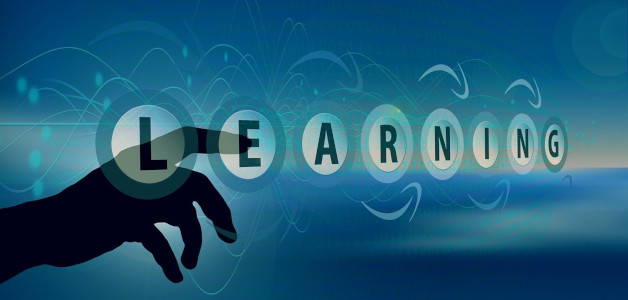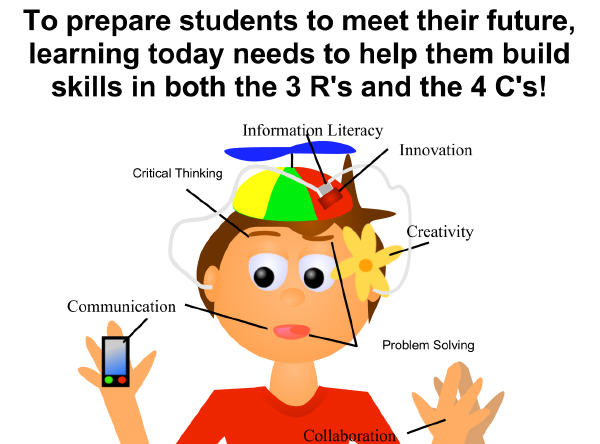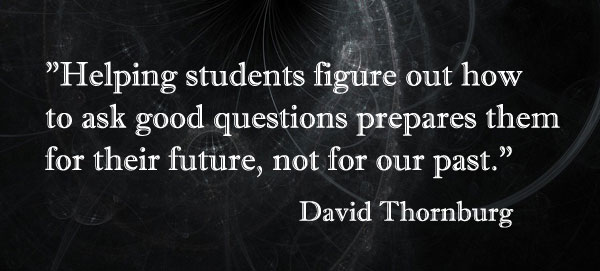
Helping students meet their future

Our world is changing and changing rapidly. But while we often see digital natives on the covers of contemporary magazines, we have students in our classrooms from both sides of the divide. A 21st-century classroom must engage and energize both natives and non-natives, preparing all students to be active participants in our exciting global community.
Many look at this divide and cry out for a renewed focus on the 3 R's - reading, writing, and arithmetic. But in order to fully participate in today's global community, students must also master the 4 C's:
So often, when we talk about change in the classroom, we simply add one more thing to the list of topics we expect educators to cover. However, as you constructivists out there know, learning is activated when we help our students uncover information, not simply cover it for them.

When we think about bringing the 4 C's into our classroom, we don't need to add a thing. The best way to help students master these skills is to change how we teach and learn in our classrooms. It is the process of learning, not the content of learning, that addresses the 4 C's.
Technology is a perfect vehicle for facilitating this. But this isn't about learning how to use technology or even teaching with technology tools, it is about students creating and constructing with technology. That is why we develop tools like Wixie and lead professional development on PBL at Tech4Learning.
We can help students build creativity and critical thinking through the types of questions we ask them to respond to. With all of the information that can easily be found online, we no longer need to have students think of things, but think about them.
Students should be building communication skills that reflect the media-rich world they are surrounded by. Rather than writing an essay or a report about a subject they are learning, ask students to help solve a problem and let them share their solution using formats they see in the world around them, such as digital stories, eBooks, virtual museums, video journals, news broadcasts, and interactive games.
While you can encourage students to respond to a question in multiple ways without technology tools, multimedia authoring tools engage students abilities and interests and naturally encourage them to create products that reflect their individuality and unique ideas.
While we often think about collaboration in terms of connecting with experts or emailing experts, technology tools, like Wixie and GoogleDocs, are allowing for collaboration on documents. But, collaborative learning entails more than just students working next to each other or even helping one another. Truly collaborative project work enhances student learning by modeling authentic work in the 21st-century and helping students achieve the large-scale goals of a project in the time allotted.
The hardest questions and biggest problems we face today do not have one right answer. In our test-driven classrooms, it is easy to get in a rut of looking for that one correct answer. Products that look different help to foster a learning environment where lots of right answers are accepted and encouraged.

21st-century classrooms are not about technology, they are about learning! They are places that have moved from "teachers telling to students doing." They are places where students are media producers, not just consumers.
Editor's Note: This article originally appeared on the Tech4Learning blog on Mar 30, 2011.

Follow us on Instagram for daily inspiration

Create a thought web, cluster, flowchart, or other graphic organizer for a lesson
8 first projects to get students using technology
Creative, digital book reviews
Fun and powerful ideas with animated characters

Wixie
Share your ideas, imagination, and understanding through writing, art, voice, and video.

Rubric Maker
Create custom rubrics for your classroom.

Pics4Learning
A curated, copyright-friendly image library that is safe and free for education.

Wriddle
Write, record, and illustrate a sentence.

Get creative classroom ideas delivered straight to your inbox once a month.
Topics